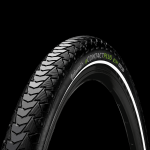Hello all,
New here, I've been building a couple of eBike with different motor in the pass, BBSHD, CYC, Grin GS62, Grin Brompton Kit etc, but ive decided to build a solar Recumbent trike. Thing is I'm new to trike and how they ride and handle, I've notice from testing it without electricity that sometimes on gravel hill the back wheel skip.
So, after some research I've come to 3 possible builds (I've eliminated the Mid-Drive + Enviolo automatic, since because of reliability of bolt on mid-drive concern compared to Grin Kit on long journey)
The 3 motors configuration would be 2 front all axle (but this is heavier and lot more expensive) The Rear GMAC 10T Or the New Rear All axle.
The Catrike Pocket weight about 34 pounds I weight 197 pounds and I'm hauling my daughter in the kid trailer. I will have a solar roof + some lightweight travel gear. I am familiar with the motor simulator, but I would like some real-world input on the best configuration for a Trike, so I don't get stuck on a hill because traction is missing out.
I always use PAS my average consumption is around 7-8wh/KM rested is added by human power. Note that all tires will be the larger Continental eContact Plus which seems to have good grip and flat defense. Mainly I will go on gravel road and cycling trail so basically gravel triking ? lol.
Thanks in advance for all your input.
Cheers
New here, I've been building a couple of eBike with different motor in the pass, BBSHD, CYC, Grin GS62, Grin Brompton Kit etc, but ive decided to build a solar Recumbent trike. Thing is I'm new to trike and how they ride and handle, I've notice from testing it without electricity that sometimes on gravel hill the back wheel skip.
So, after some research I've come to 3 possible builds (I've eliminated the Mid-Drive + Enviolo automatic, since because of reliability of bolt on mid-drive concern compared to Grin Kit on long journey)
The 3 motors configuration would be 2 front all axle (but this is heavier and lot more expensive) The Rear GMAC 10T Or the New Rear All axle.
The Catrike Pocket weight about 34 pounds I weight 197 pounds and I'm hauling my daughter in the kid trailer. I will have a solar roof + some lightweight travel gear. I am familiar with the motor simulator, but I would like some real-world input on the best configuration for a Trike, so I don't get stuck on a hill because traction is missing out.
I always use PAS my average consumption is around 7-8wh/KM rested is added by human power. Note that all tires will be the larger Continental eContact Plus which seems to have good grip and flat defense. Mainly I will go on gravel road and cycling trail so basically gravel triking ? lol.
Thanks in advance for all your input.
Cheers



